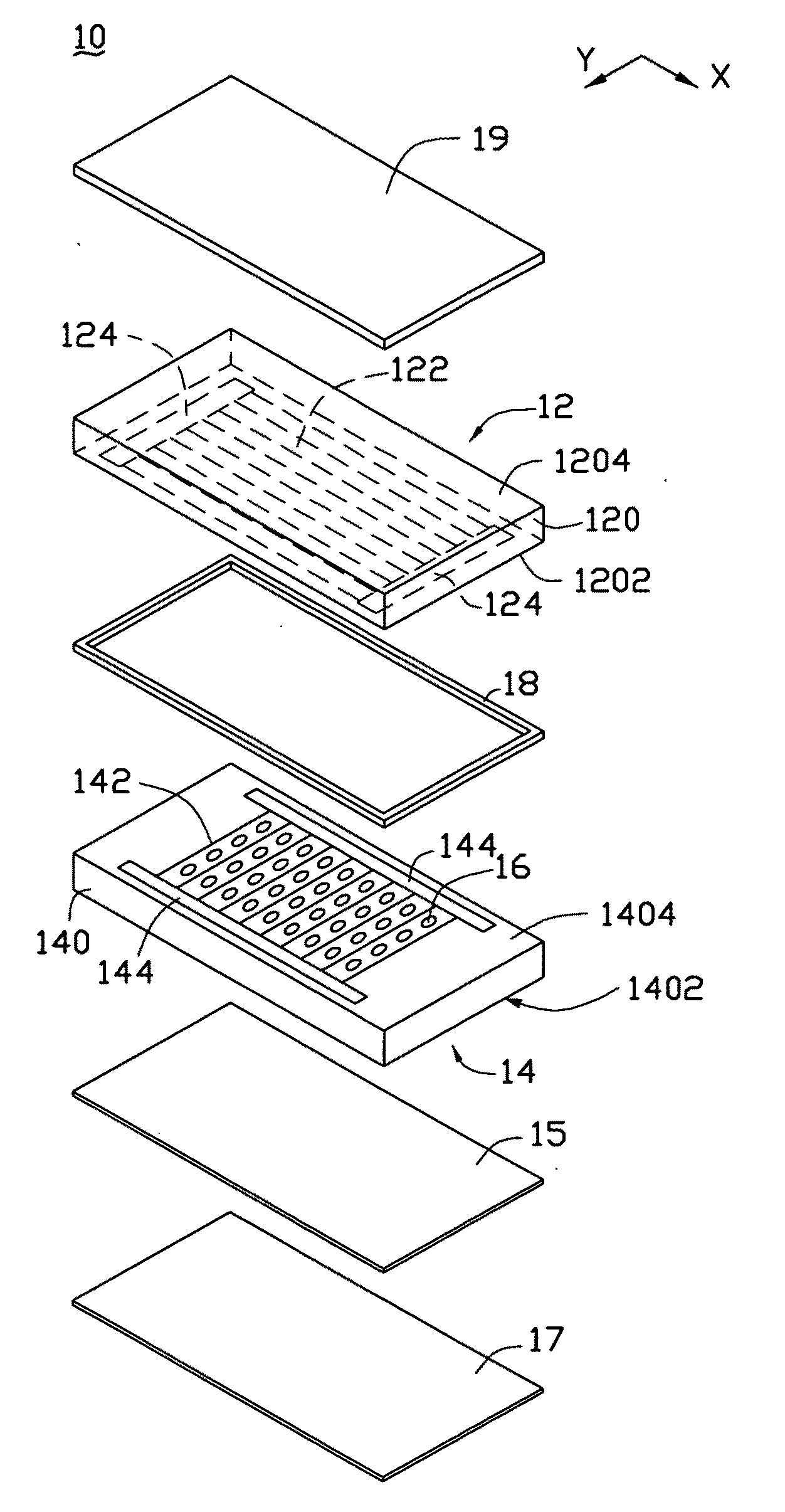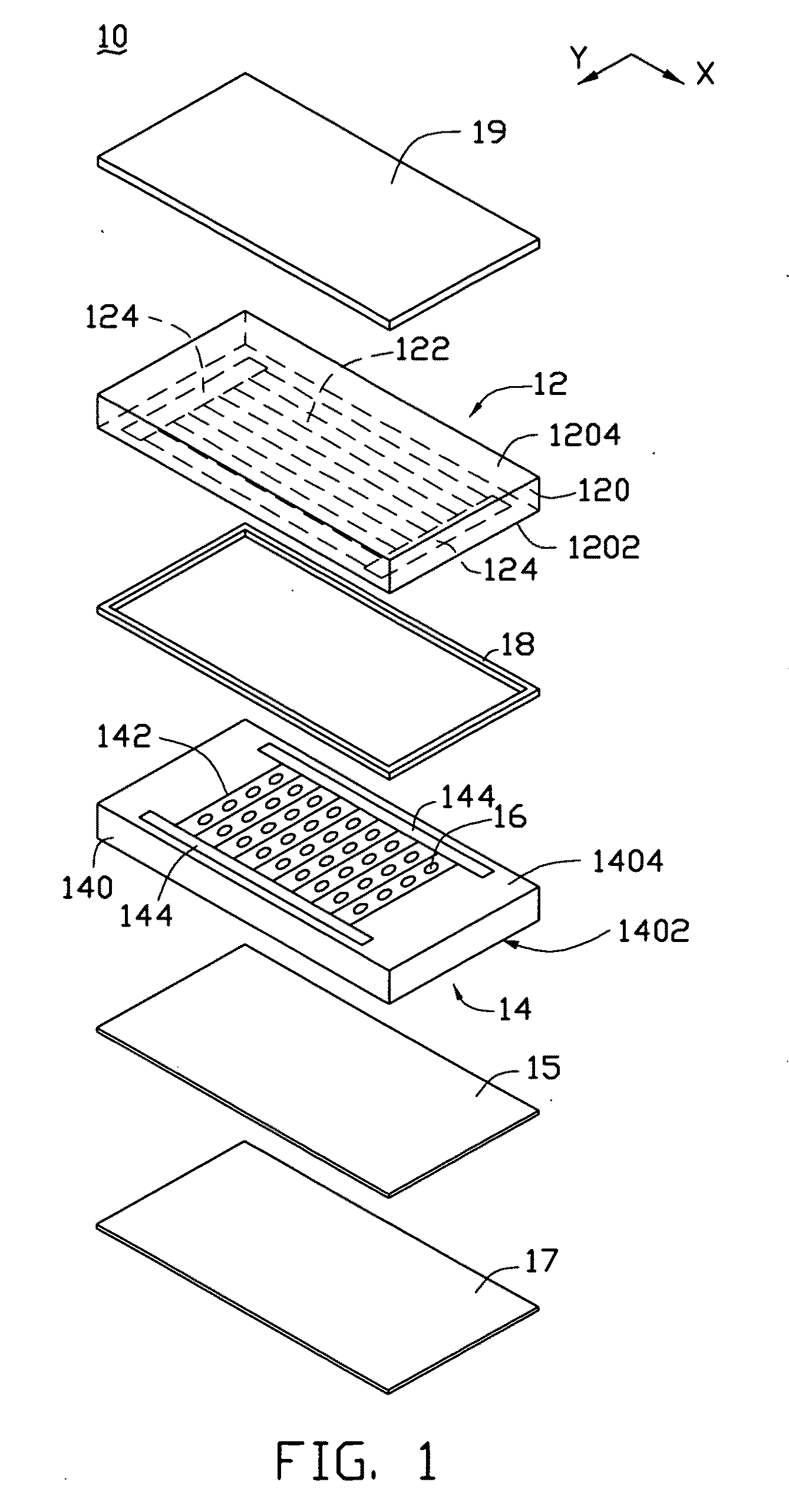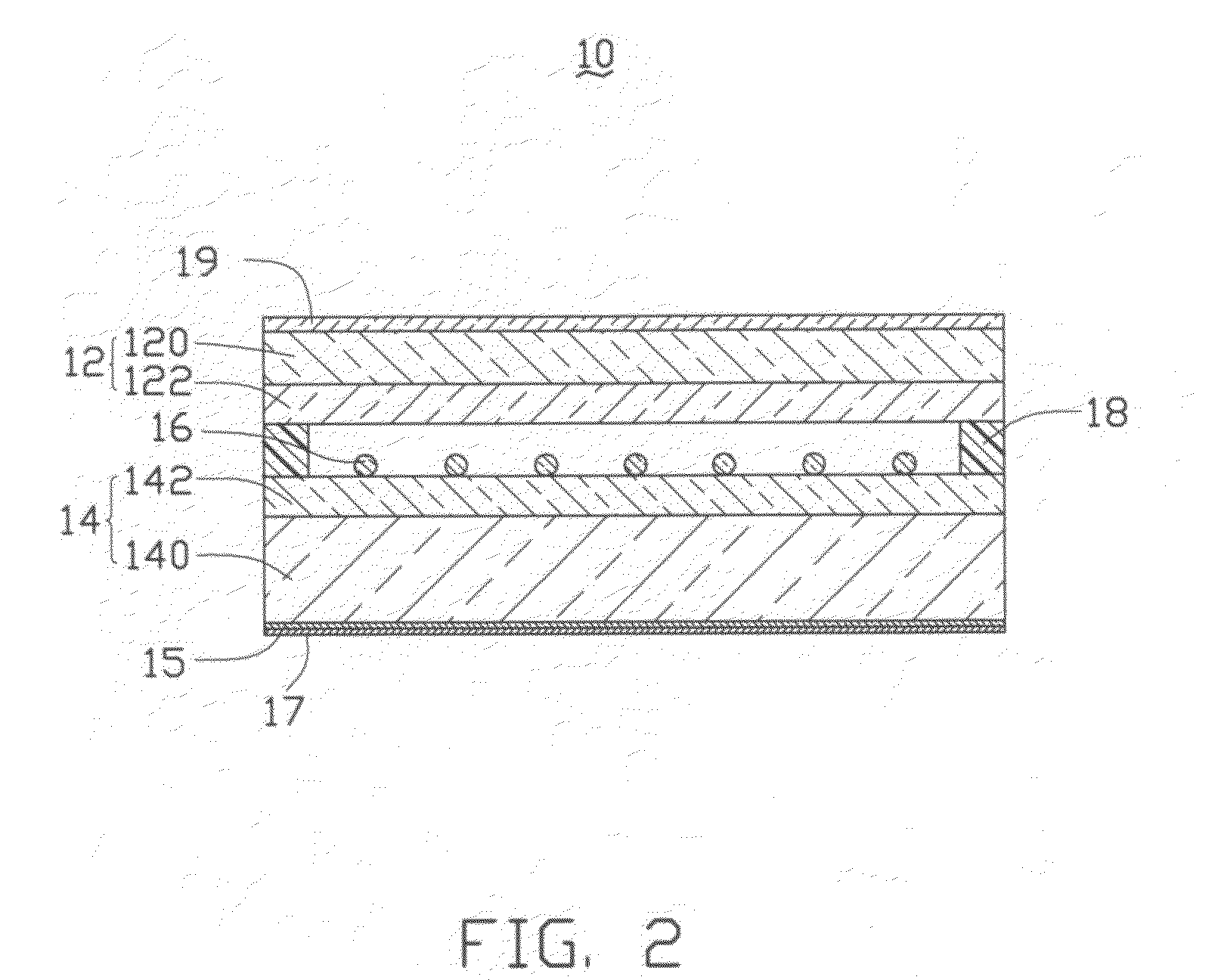Touch panel and display device using the same
a display device and touch panel technology, applied in the field of touch panel and display device, can solve the problems of poor mechanical durability of the ito layer uneven resistance over the entire area of the touch panel, low chemical endurance, etc., and achieve the effects of improving the accuracy, brightness, accuracy and brightness of the touch panel
- Summary
- Abstract
- Description
- Claims
- Application Information
AI Technical Summary
Benefits of technology
Problems solved by technology
Method used
Image
Examples
example 1
[0030]Referring to FIGS. 4 and 5, the carbon nanotube metal composite layer 100 includes a carbon nanotube film 101 and the metal layer 110 covered on the carbon nanotube film 101. The carbon nanotube film 101 includes a plurality of carbon nanotubes 111. Each carbon nanotube 111 is covered by the metal layer 110 on the outer surface thereof. The metal layer 110 includes a wetting layer 112 and a conductive layer 114. The wetting layer 112 is the innermost layer, which directly covers and contacts the surface of the carbon nanotube 111. The wetting layer 112 can be a Ni layer with a thickness of about 2 nanometers. The conductive layer 114 enwraps the wetting layer 112. The conductive layer 114 can be an Ag layer with a thickness of about 10 nanometers. The resistance of the carbon nanotube metal composite layer 100 is about 1173 ohm per square, the transmittance thereof is 92.7%.
[0031]The wettability between carbon nanotubes and most metals is poor. The wetting layer 112 is configu...
example 2
[0034]A transition layer and an anti-oxidation layer cover each single carbon nanotube in the carbon nanotube film. More specifically, referring to FIG. 6, a single carbon nanotube 211 in the carbon nanotube film is covered by a metal layer 210 on the outer surface thereof. The metal layer 210 includes a wetting layer 212, a transition layer 213, a conductive layer 214, and an anti-oxidation layer 215. The wetting layer 212 is the innermost layer, and directly covers the surface of the carbon nanotube 211. The transition layer 213 enwraps the wetting layer 212. The conductive layer 214 enwraps the transition layer 213. The anti-oxidation layer 215 enwraps the conductive layer 214.
[0035]The transition layer 213 is arranged for combining the wetting layer 212 with the conductive layer 214. The material of the transition layer 213 can be combined with the material of the wetting layer 212 as well as the material of the conductive layer 214, such as Cu, Ag, or alloys thereof. A thicknes...
PUM
 Login to View More
Login to View More Abstract
Description
Claims
Application Information
 Login to View More
Login to View More - R&D
- Intellectual Property
- Life Sciences
- Materials
- Tech Scout
- Unparalleled Data Quality
- Higher Quality Content
- 60% Fewer Hallucinations
Browse by: Latest US Patents, China's latest patents, Technical Efficacy Thesaurus, Application Domain, Technology Topic, Popular Technical Reports.
© 2025 PatSnap. All rights reserved.Legal|Privacy policy|Modern Slavery Act Transparency Statement|Sitemap|About US| Contact US: help@patsnap.com



